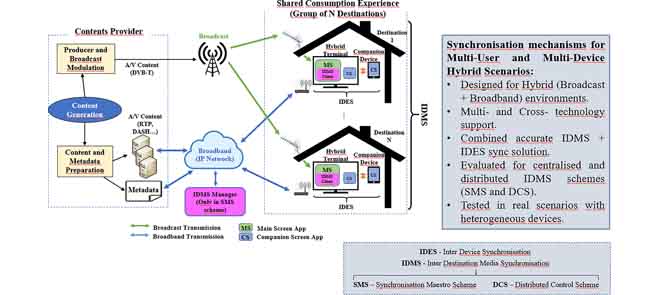Synchronization Mechanisms for Multi-User and Multi-Device Hybrid Broadcast and Broadband Distributed Scenarios
Traditionally, co-located TV content consumption has been a social habit (e.g., family members in the living room watching TV). It cannot be always possible to enjoy these shared experiences in the current global society, in which relatives or friends might live apart. In this context, the emergence of new technologies together with the advent of social media and conferencing services brings the possibility of recreating them when users are geographically distributed. When remote users are involved in a networked shared TV consumption experience (Social TV), inter-destination media synchronization (IDMS) is a key requirement to provide them with a satisfactory experience. Moreover, enriching the broadcasted TV content with alternative (or complementary) broadband content is gaining momentum. When several co-located consumption devices are involved in the TV viewing experience, inter-device synchronization (IDES) mechanisms are also needed to allow successful multi-screen experiences. This paper presents a combined synchronization mechanism (including both IDMS and IDES solutions) for distributed scenarios involving remote users and hybrid (broadcast and broadband) contents, to be consumed in one or several devices. The mechanism provides multi- and cross-technology support and achieves accurate synchronization levels even when different versions or formats of the media contents are being played out. It has been integrated into a hybrid broadcast broadband TV standard-based platform, and the achieved synchronization accuracy and the performance of the solution for the Social TV use case have been evaluated, obtaining satisfactory and promising results.

If you want to know more about this topic, see the original article.






